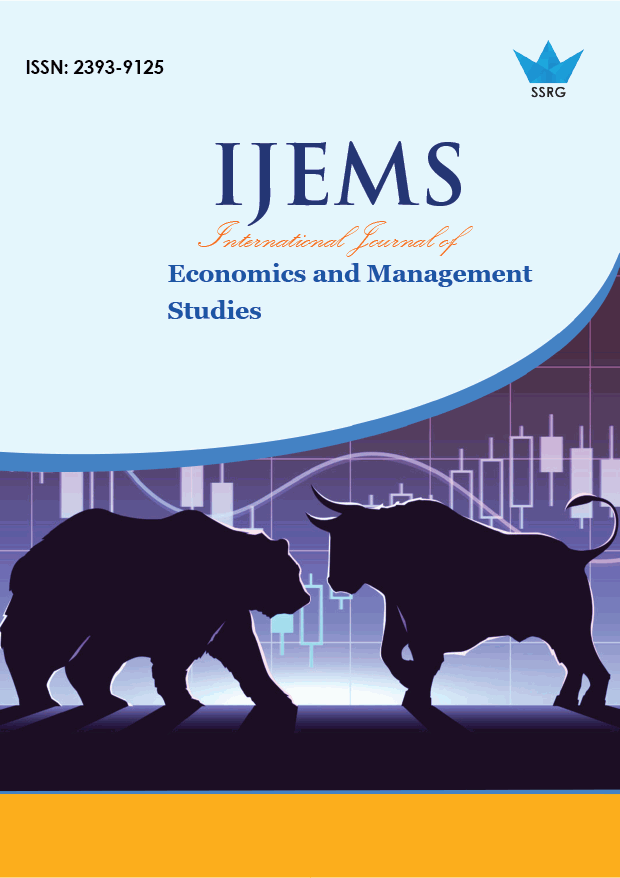Quality-Service of Courier Companies Using Six Sigma Approach

| International Journal of Economics and Management Studies |
| © 2020 by SSRG - IJEMS Journal |
| Volume 7 Issue 9 |
| Year of Publication : 2020 |
| Authors : RR ERLINA |
 : 10.14445/23939125/IJEMS-V7I9P109 : 10.14445/23939125/IJEMS-V7I9P109 |
Citation:
RR ERLINA, "Quality-Service of Courier Companies Using Six Sigma Approach" SSRG International Journal of Economics and Management Studies 7.9 (2020): 77-85.
RR ERLINA,(2020). Quality-Service of Courier Companies Using Six Sigma Approach. SSRG International Journal of Economics and Management Studies 7(9), 77-85.
Abstract:
The aim of controlling service quality is to reduce defects and even achieve zero defects. The focus of this paper is to analyze the service attributes that need to be developed by courier companies in Indonesia with the Six Sigma method. The results of the discussion showed that the quality of service was not maximal; it was still far from level 6 sigma with DPMO 3.4. Hence it was necessary to improve services. The calculation results in six Sigma show
that the dominant critical attribute is Rel2 (on-time delivery of goods) to be the dominant attribute causing customer dissatisfaction.
References:
[1] Ariani, Dwi Wahyu. 2009. “Management of Service Operations.” Graha Sciences: Yogyakarta.
[2] Arikunto, Suharsimi. 2013. Research Procedure: A Practical Approach. Rineka Cipta: Jakarta
[3] Bougie, Roger and Uma Sekaran. 2013. “Research Methods for Business: A Skill Building Approach”, 5th ed. New York: John Wiley @ Sons
[4] Dehghan, Ali, Arash Shahin, and Bahman Zenouzi. 2012. “Service Quality Gaps & Six Sigma”. Vol. 4, No.1. pp. 1-11
[5] Dewi, Anindita Kusuma and Ibnu Widiyant.2015. “Medical Laboratory Service Performance Information System with Six Sigma Method”. Journal of Business Information Systems 02 (2015). pp. 161-170
[6] Firdian Endy, Surachman and Purnomo Budi Santoso. 2012. “Application of the Servqual and Six Sigma Method in Analyzing Service Quality of PT. PLN (Persero) Dinoyo Malang Network Service Unit (UPJ)”. Journal of Science and Engineering, Vol.13 No.13. pp. 51-61
[7] Ghozali, Imam. 2011. “Application of Multivariate Analysis with SPSS Program” .Diponegoro University Publisher Agency: Semarang
[8] Griffin, Ricky Willy. 2012. Management, Volume 7, Volume 1. Erlangga: Jakarta
[9] Jay Heizer, Barry Render. 2011. Operations Management. Salemba Empat: Jakarta
[10] Kilibarda, Milorad, Svetlana Nikolicic, and Milan Andrej. 2016. “Measurement of Logistics Service Quality in Freight Forwarding Companies: A Case Study of the Serbian Market.” Vol. 27, No.23. pp. 770-792
[11] Kotler, Phillip. 2013. Marketing Management 11th ed. Upper Saddle River. NJ: Prentice-Hall
[12] Paramita, Meryana Santya., Wike Agustian Prima Diana, and Dhita Morita Ikasari. 2015. “Consumer Satisfaction Evaluation of Service Quality Using Servqual (Service Quality) and Six Sigma Methods (Case Study in Pasuruan "Dahlia Restaurant"). Journal of Agroindustrial Technology and Management. Vol 4, No. 03. Pp. 1-12
[13] Ngaliman, Mika Giofani Eka J, Suharto, "The Effect Of Tangibles, Responsiveness, And Reliability On Customer Satisfaction Of Delivery Services" SSRG International Journal of Economics and Management Studies 6.5 (2019): 86-92.
[14] Priyatno, Dwi. 2010. “Analysis of Statistical Data with SPSS”. MediaKom: Yogyakarta
[15] Robbins, Stephen Paul and Mary Coulter.Management Volume 2. Erlangga. Jakarta
[16] Sugiyono. 2013. “Educational Research Methods Quantitative, Qualitative, and R&D Approaches”. Alfabeta: Bandung
[17] Suliyanto.2009. Business Research Methods. Andi: Yogyakarta
[18] Syukron, Amin and Muhammad Kholil. 2013 “Six Sigma Quality For Business Improvement”. Graha Imu. Jakarta
[19] Tjiptono, Fandy and Gregorius Chandra. 2011. “Service, Quality and Satisfaction” Third Edition.Andi.Yogyakarta
[20] Wisnubroto.2012. Proceedings of thePeriod III National Science & Technology Application (SNAST) ISSNSeminar: 1979-911X. Yogyakarta
Key Words:
Consumer Satisfaction, Quality Service, Six Sigma

